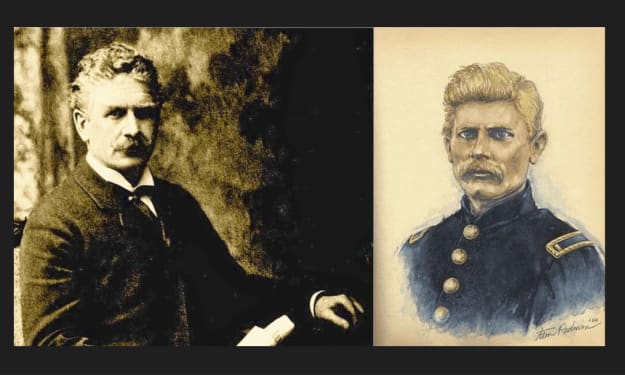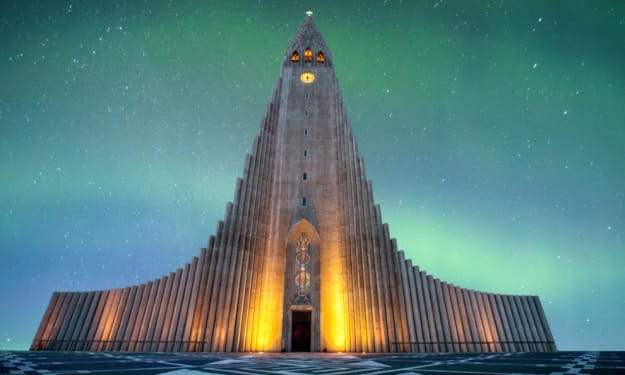The TERRIFYING Final Moments of Michael Rockefeller
Michael Rockefeller (1961) - The son of New York Governor Nelson Rockefeller disappeared in New Guinea.

The disappearance of Michael Rockefeller in 1961 is one of the most compelling and enduring mysteries of the 20th century. As the son of New York Governor Nelson Rockefeller and a member of one of America’s wealthiest and most influential families, Michael's vanishing in the remote jungles of New Guinea captured global attention and has since been the subject of intense speculation and investigation.
Michael Rockefeller was a 23-year-old Harvard graduate with a keen interest in anthropology and a passion for exploring uncharted territories. In 1961, he joined an expedition to Dutch New Guinea (now Papua, Indonesia) to study and collect artifacts from the Asmat people, a remote and isolated tribe known for their elaborate woodcarvings and rituals.
On November 17, 1961, Rockefeller and his Dutch anthropologist companion, René Wassing, were traveling in a catamaran off the southern coast of New Guinea when their boat capsized. Despite their efforts to stay with the vessel, the strong currents began to drift them further from shore. After drifting for hours, Michael decided to swim to the distant shore, leaving Wassing behind on the overturned boat. His last words to Wassing were, "I think I can make it." Michael was never seen again.
The Dutch authorities, the Rockefeller family, and the U.S. government launched an extensive search operation that lasted weeks. Helicopters, airplanes, and boats scoured the area, and the Asmat tribespeople were interviewed. Despite these efforts, no trace of Michael was found. The official conclusion was that he likely drowned or was eaten by sharks or crocodiles. However, this explanation did little to quell the speculation and rumors that followed.
One of the most persistent theories is that Michael Rockefeller made it to shore but fell victim to the Asmat tribe, who were rumored to practice headhunting and cannibalism. This theory gained traction because of the Asmat's reputation and the anthropological context of the time. Reports of white men being seen in Asmat villages and various anecdotal accounts have surfaced over the years, suggesting that Rockefeller might have been captured and killed.
In 1969, a sensationalist book titled "The Search for Michael Rockefeller" by Milt Machlin proposed that Rockefeller had indeed reached the shore and was killed by the Asmat. Machlin based his claims on interviews with missionaries and local people, but his evidence was largely circumstantial.
In 2014, Carl Hoffman’s book, "Savage Harvest: A Tale of Cannibals, Colonialism, and Michael Rockefeller's Tragic Quest," reignited the debate. Hoffman traveled to Papua and conducted extensive research, including interviews with Asmat elders who claimed that their ancestors had indeed killed and eaten Rockefeller. Hoffman's investigation suggested that Michael’s death was an unfortunate result of cultural misunderstandings and the tensions between the Asmat and the colonial authorities.
Despite these compelling narratives, definitive proof has remained elusive. The Rockefeller family has largely remained silent on the matter, and no official follow-up investigation has confirmed Hoffman's findings. The lack of physical evidence, such as remains or personal artifacts conclusively linked to Michael, means that the mystery endures.
Another theory posits that Michael Rockefeller chose to abandon his former life and integrate with the Asmat people. This theory, while romantic, is highly improbable given the cultural and linguistic barriers, as well as the short time he would have had to establish such a rapport with the tribe.
The intrigue surrounding Michael Rockefeller’s disappearance is compounded by the social and political context of the time. The early 1960s were a period of significant tension and change in Papua, as Dutch colonial rule was being challenged and the region was on the brink of integration into Indonesia. This political backdrop adds layers of complexity to the case, suggesting that Michael’s disappearance might have been influenced by factors beyond his immediate control.
Michael Rockefeller’s story is more than just a tale of a young adventurer’s tragic end; it is a window into a world of cultural clashes, colonial legacies, and the enduring human fascination with the unknown. His disappearance continues to captivate historians, anthropologists, and the public, symbolizing the ultimate unsolved mystery.
About the Creator
Marveline Merab
“History never repeats itself. Man always does.”
― Voltaire
Enjoyed the story? Support the Creator.
Subscribe for free to receive all their stories in your feed. You could also pledge your support or give them a one-off tip, letting them know you appreciate their work.






Comments
There are no comments for this story
Be the first to respond and start the conversation.